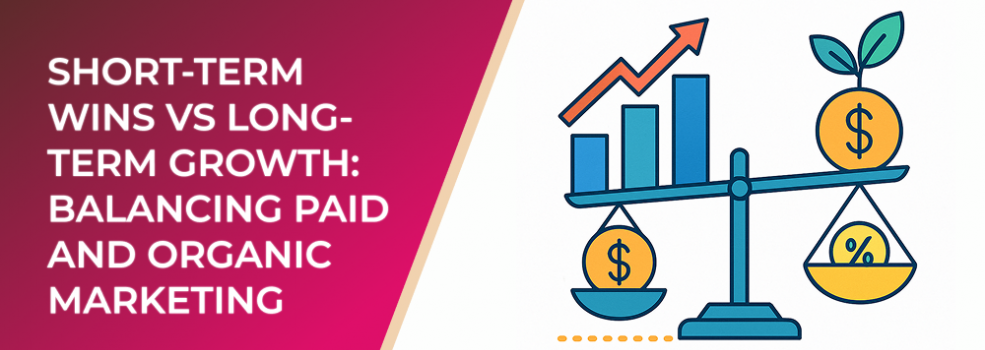Marketing is often a balancing act between quick wins and long-term sustainability. Paid advertising offers immediate visibility and measurable outcomes, while organic marketing builds brand trust, loyalty, and authority over time. In today’s competitive landscape, businesses need both approaches to thrive.
The Power of Paid Marketing
Paid marketing—whether through Facebook Ads, Google Ads, or other platforms—delivers speed and precision. With advanced targeting options, businesses can reach highly specific audiences in real time. Statistics show that paid ads can increase brand awareness by up to 80%. Moreover, campaigns can be scaled quickly, making them especially valuable for product launches or seasonal promotions.
However, the challenge lies in cost sustainability. Studies indicate that over 60% of businesses struggle with rising ad costs year over year. Without careful optimization, reliance on paid campaigns alone can erode profitability.
The Strength of Organic Marketing
Organic marketing, which includes SEO, social media engagement, and content creation, builds trust and authority over time. For example, businesses that publish consistent blog content generate 67% more leads than those that don’t. Additionally, organic search still drives over 50% of website traffic across industries, proving its long-term importance.
The trade-off is time. Organic strategies often require months to deliver results, making them less suitable for urgent campaigns or immediate sales goals.
Why Balance Matters
Neither paid nor organic marketing alone is enough to sustain growth in today’s multi-channel environment. A balanced approach ensures businesses benefit from both quick results and long-term stability. For example:
-
Paid campaigns can fuel initial traffic and provide data insights.
-
Organic efforts can nurture customer relationships and reduce dependence on rising ad costs.
Companies that integrate both approaches often report stronger overall ROI. In fact, organizations that blend SEO with paid search campaigns experience 25% higher click-through rates than those relying on a single method.
Best Practices for Balancing Paid and Organic
-
Use Paid to Test, Organic to Scale: Leverage paid campaigns to test messaging, audiences, and offers, then double down on the winning strategies through organic channels.
-
Invest in Quality Content: Paid ads can amplify reach, but consistent organic content ensures lasting value and engagement.
-
Optimize Across Channels: Align messaging and branding across paid and organic efforts for cohesive customer experiences.
-
Measure Holistically: Track metrics like lifetime customer value, not just cost-per-click, to evaluate true effectiveness.
Conclusion
Balancing short-term wins with long-term growth is not about choosing between paid and organic marketing—it’s about aligning them strategically. Paid campaigns deliver speed, while organic strategies ensure sustainability. Together, they create a marketing ecosystem that drives both immediate conversions and lasting brand equity.

